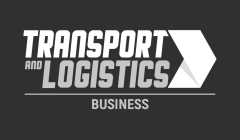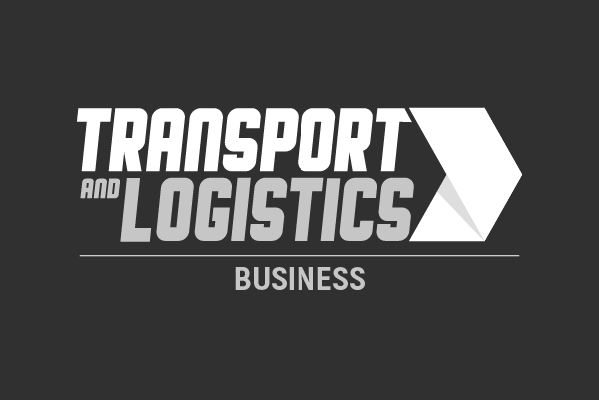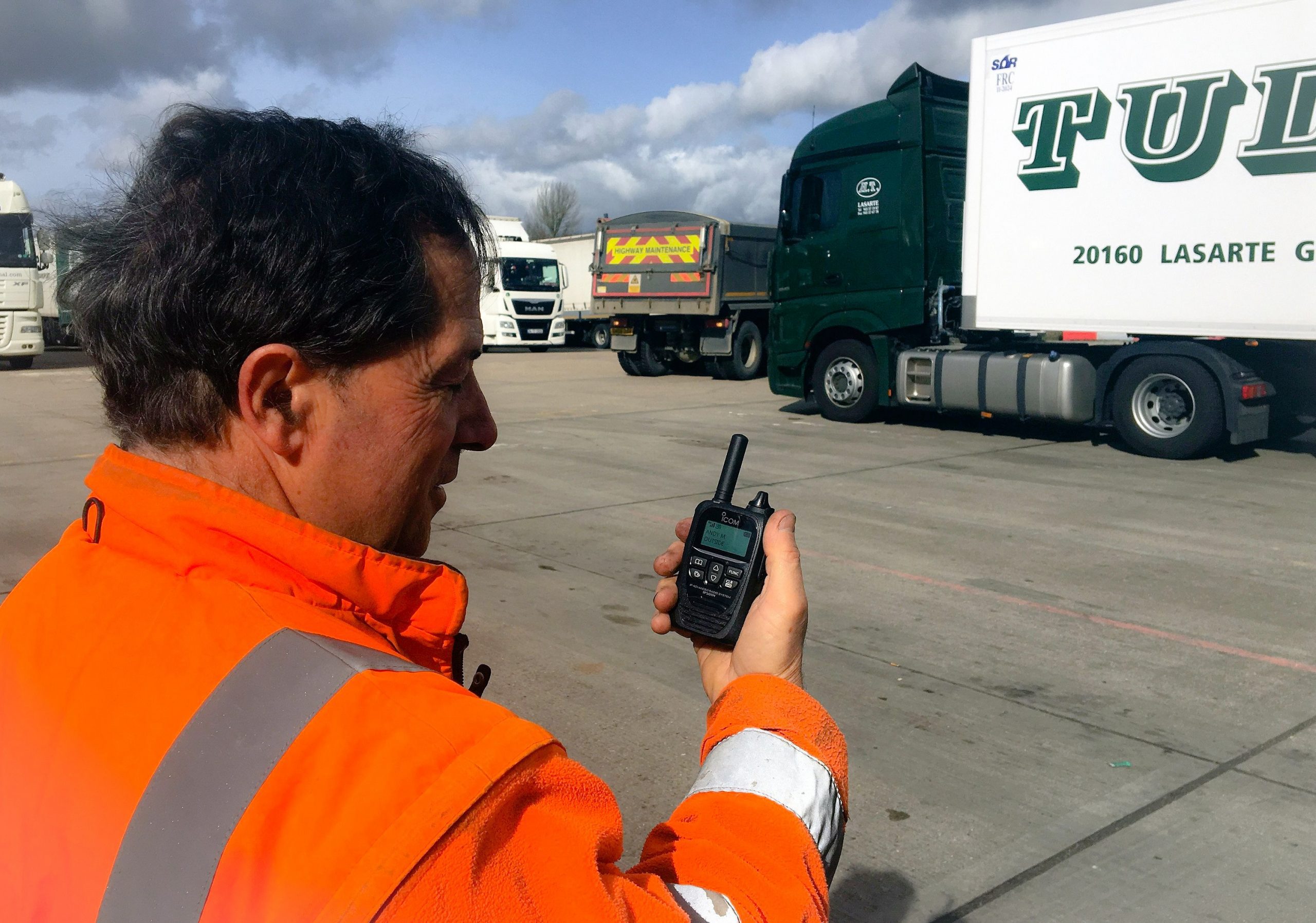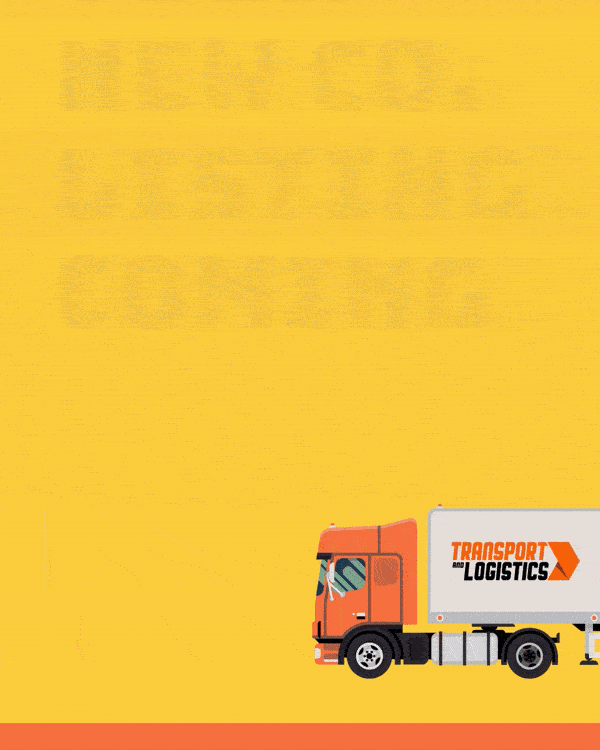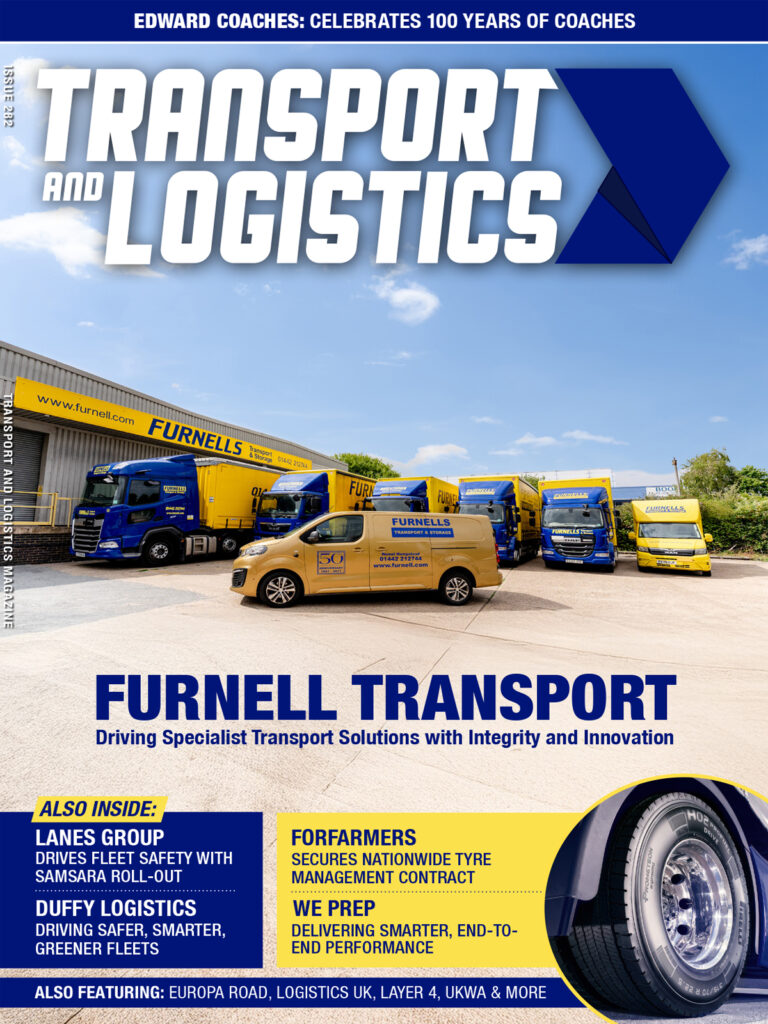ChannelPorts, the only private customs clearance agent in the UK is one of the latest companies to adopt the Icom LTE radio system. The company boasts a track record of processing over 3,000 vehicles and consignments a month through the customs clearance in Kent and uses the LTE radio system to coordinate parking and customs clearance. The LTE radio system was supplied by Chatterbox Ltd.
ChannelPorts based in Folkestone Services, Hythe on Junction 11 of the M20 motorway provide a complete customs clearance service for trucks through the Port of Dover and via the Channel Tunnel.
There are two main parts to the business. The company is authorised by HMRC to provide a customs clearance service for commercial vehicles coming in and out of the country. They organise the paperwork for custom clearance and pay taxes. The second part of their business is lorry parking. The company have a 200-space lorry park, spread over a one square mile area in three sections.
Chris Childs of ChannelPorts said, ’We need radio comms here as our business/parking is spread over a one square mile area. We have limited space for parking so we need good communication as we have to turn many drivers away, maybe 150-200 vehicles a night because we are always full. We must have staff positioned at various points around the site to tell drivers that we either have spaces or not.’
He added, ‘We have always used radio communications. Our previous digital radio system was from another manufacturer and although the quality was good outside because of the type of buildings we have in here and the distance we are covering, it would drop out quite often.’
‘We went for the Icom LTE system because of the simplicity of the setup. There were no additional aerials, repeaters to put up. We have a mobile phone mast right outside and once we tested it, it was almost a no brainer.’
He added,’ The Icom LTE radios have performed well. The quality of the audio is very good. Once you get over the initial difference that you must wait for a beep to talk, it becomes second nature.’
Chris said, ‘Two LTE radios have been allocated for the management team so we can communicate directly with each other as well as the whole team. We have an outside team that have been allocated radios. We also have a radio allocated in our office so if there is a problem outside someone can go down and deal with it. There is also a base station radio that is housed in a Bluetooth charger.’
‘The LTE radios are also used to deal with any emergencies. If our staff see something unusual or suspicious around the parking sites they will report it over the radio.’
Why not mobile phones? Chris said, ‘These LTE devices are more rugged than a mobile phone, specific to the task and less likely to be taken home. They also work out much cheaper than a mobile phone. They are more direct and you can contact many people at the same time rather than one to one communication. The LTE radios also have the benefit of a break-in feature which allow management to talk over a conversation if there was something urgent to talk about…rather than waiting for a channel to be free.’
He added, ’We have lone worker and man down panic alarms programmed into the radios. These features are especially useful for the outside staff working on their own. Having that accountability is especially useful and any alert would go through to anyone on air at the time. The radio would open a live mic which would allow the team to have an idea of what the problem is. This is set at an interval setting of every 15 minutes so if the radio isn’t used an alert will start beeping.’
‘The LTE radios are also used when our team go down into Dover, which is about 7-8 miles away, to get drivers documents stamped for them. This depends on the type of goods that are transported and we may only be doing this a couple of times a week.’
